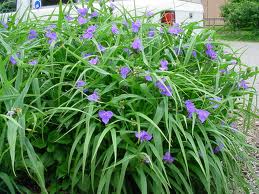Here in Zone 6a, the beauty of Fall is waning.
Time for reality, and tending to winterizing before it gets too cold out there. November is the perfect time for putting the garden to bed.
- Divide and cut back perennials.
Tall grasses should be tied with twine or tape, then whacked close to ground level with hedge trimmers. You can then divide the roots if necessary.
Daylilies, like the tall grasses, should be cut back if they aren’t already. About once every three years or so, the roots can be divided with pitchforks, as demonstrated in this clip.
- Dig up and store summer tubers, such as cannas, calla lilies, and dahlias.
- Gather seeds from the beautiful annuals you had in the garden this year. Shake dried seed pods directly into small plastic bags, making sure to slip in a small piece of paper that identifies the seed before sealing. Here’s a seed catalog project I’ve finally been able to achieve!
- Once the frost has hit them, dig out annuals and throw them on the compost pile.
- Fall is the perfect time to plant new trees or shrubs. The roots will need plenty of water and will establish themselves before the ground has a chance to freeze.
- Amend your soil. Here in the Western Pennsylvania region, clay soil is pretty much the norm. Amending the garden beds by adding compost annually really helps the plants and trees that are planted in this soil perform and breathe!
- Empty hoses and shut off water from inside the house. Bring those clay crocks and other breakables inside, they
maywill break 😦
- Take a look at your bird feeder location. Make sure it’s high enough to discourage ground invaders, in a nice sunny spot so birds will enjoy the location. And make sure it’s not in the range of any domesticated animal run. Sound like experience talking here?
- Place a stick in the bird bath, so that when the water freezes, you will be able to remove the ice and refill with fresh water.
- Protect cold-sensitive plants. This could mean mulching with leaves or constructing burlap enclosures and filling with leaves. Anything to keep the plants protected, but not too warm as to encourage growth.
With minimal pain, you will have a head start on the Spring chores once Mr. Winter goes back into hibernation.
Not to rush life along, but I’m soo looking forward to Spring!






